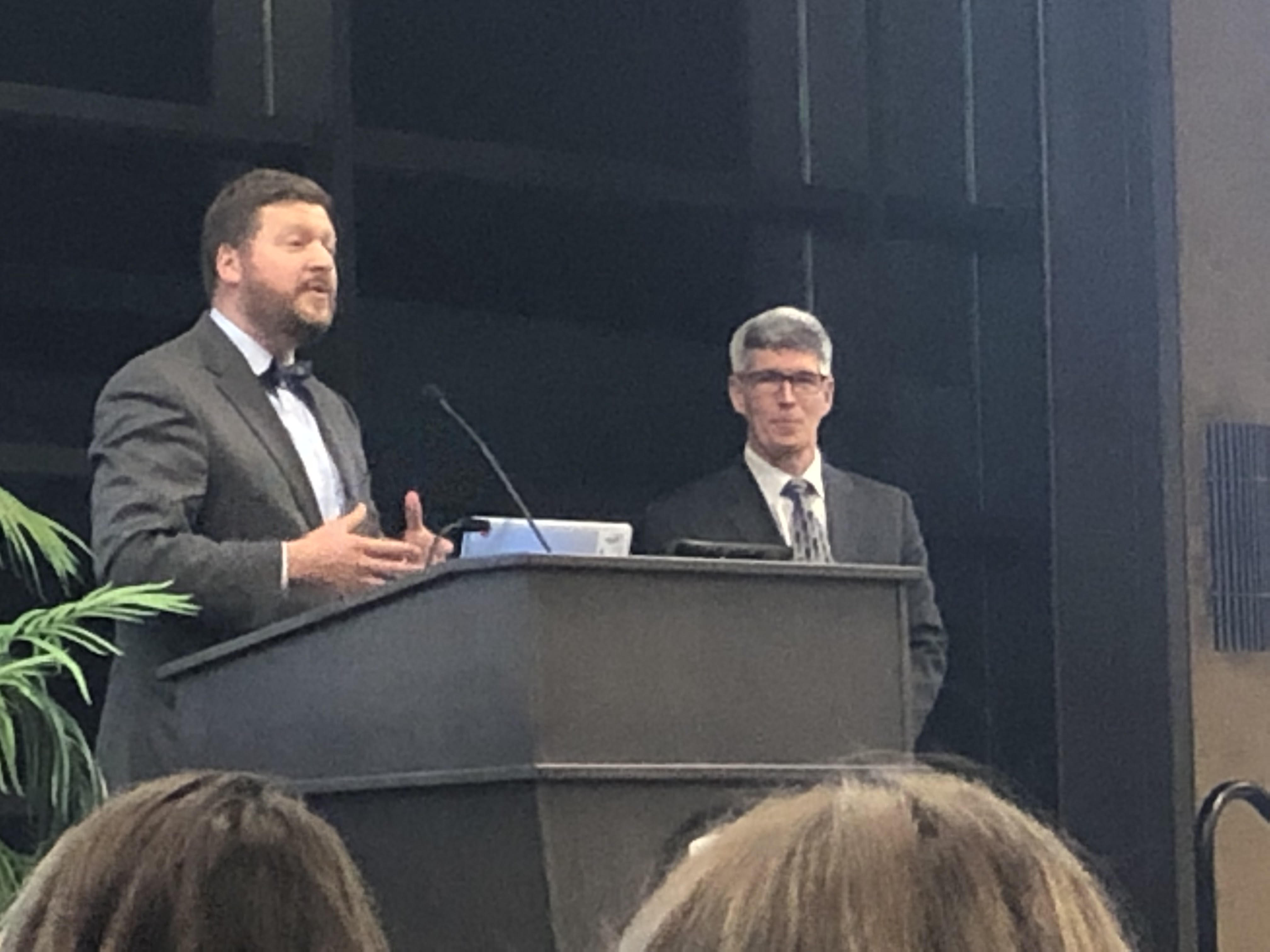
10/17/2019
Kellen Stepler | assistant features editor
Fifty years ago marked the Woodstock Festival, the Manson murders and the Stonewall riots.
It also was when the U.S. launched Apollo 11, placing three astronauts on the moon.
And now, a half-century later, Duquesne’s Department of History is hosting Bill Barry for its 2019 History Forum. The event, titled “Race to the Moon: New Perspectives for the 50th Anniversary,” was held at 7 p.m. Wednesday, Oct. 16 in Duquesne’s Charles J. Dougherty Ballroom and the Fides Shepperson Suite.
Barry became NASA’s sixth chief historian in September 2010. He began working for NASA in 2001, after retiring from a 22 year career in the U.S. Air Force. He graduated with honors from the U.S. Air Force Academy in 1979, and he also earned a master’s degree from Stanford University in 1987 and a doctorate from Oxford University in 1996. His doctoral dissertation, “The Missile Design Bureaux and Soviet Manned Space Policy 1953-1970,” won the American Institute of Aeronautics and Astronautics History Manuscript Award in 2000.
The event is hosted by the department of history, and co-sponsored by the Bayer School of Natural and Environmental sciences and the department of history.
This year’s event will give a new perspective to the Apollo 11 landing. The preview poster for the event says, “With the perspective of 50 years, and with insights coming from declassified Soviet and U.S. archival materials, we now know more about this story, challenging the popular narrative.”
Duquesne history professor Andrew Simpson notes that the History Forum has been a way for our department and university to connect with the community around historical events, and has been a staple of the Duquesne community for over five decades.
Simpson and the rest of the history department hope that the event will not only be a way to connect with the public, but also to stress how the past and the present interact.
“The lessons we learned from the moon race are still shaping how NASA and other countries and private companies conduct human spaceflight today,” Simpson said.
Simpson also mentioned three opportunities for students for attending the event.
“We hope that Duquesne students will get a chance to see the past come alive at the event. We also hope that they will chat with Dr. Barry about what interests them, and will learn more about what working for an agency like NASA can offer,” Simpson said.
There is some history between Barry and Simpson. Before Simpson came to Duquesne, he interned with Barry and the NASA History Program office. The two have stayed in touch over the last several years, and they are writing a scholarly article with two collaborators from NASA that will be published this winter in the Journal of Policy History.
When it came time for the History Forum, Simpson reached out to Barry, and he was able to come to Pittsburgh to speak.
Simpson encouraged any interested Duquesne students to intern with NASA.
“It is a really great experience, and they hold application calls several times a year for the history internship,” Simpson said.
Junior history major Stephen Hackman saw the flyer in Canevin Hall, and decided he would go and check it out.
“It caught my interest, being the 50th anniversary,” Hackman said. “It is also a nice break from studying for my midterms.”
The event opened with John Mitcham, Duquesne history department chair welcoming the crowd of about 150 people to the 51st annual History Forum. Following Mitcham’s introduction, Simpson introduced Barry to the engaged crowd.
Barry explained that while the moon race was 50 years ago, and that it seems like a well-known story, it is also shrouded in Soviet mystery, and we are still learning things today.
The space race began when President Kennedy announced to Congress in 1961 that the U.S. “should commit itself to achieving the goal, before this decade is out, of landing a man on the Moon and returning him safely to the Earth.”
In fact, Kennedy reached out to the Soviets and asked to work together to send a person to the moon. However, the Soviets ignored Kennedy’s proposal.
Between 1961 and 1963, the Soviets and U.S. began their battle to get to the moon first, but not without mystery, uncertainty and propaganda. However, the race became more serious in 1964 when President Johnson took over, according to Barry.
After years of experimentation, it became apparent that in 1968, the U.S. was going to win. But the Soviet Union was not going to give up. The Soviets’ Luna 15 launched three days before the U.S.’s Apollo 11, but on July 21, 1969, Luna 15 descended into the moon’s surface, while the Apollo 11 astronauts finished their moonwalk.
Barry explained that the race ended when Neil Armstong and Buzz Aldrin departed from the moon’s sea of tranquility, and it was too late for the Soviets.
“There really was a moon race, but it was a lot closer than what we thought,” Barry said.

